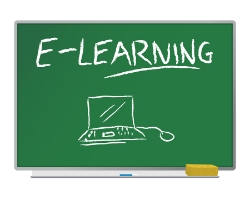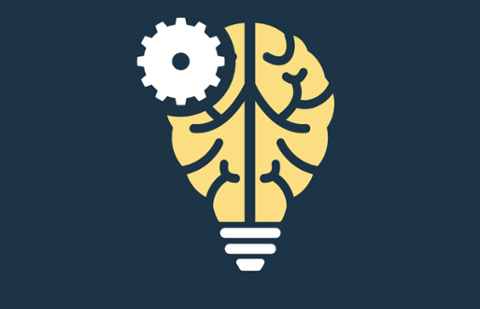
In 1999 and early 2000 I was part of the Cisco e-learning architecture team. At the time, it seemed as though e-learning—which basically encompasses various forms of electronically supported teaching and learning—was poised to become the Internet's first true killer app. E-learning in the late 1990s and early 2000s was largely defined by a combination of vendors, academic and standards groups, and various technology evangelists. Their combined vision is what we'll refer to as e-learning 1.0. Many of us on the Cisco team and other technologists sharply disagreed with that vision, and part of what we were doing was helping to define an alternative to it.
E-Learning 1.0, Defined
E-learning 1.0 is a highly structured approach to learning content development, with emphasis on testing and assessment. It takes a courseware approach and development of unique standards rather than focusing on exploitation of emerging Internet standards
. It is expert-based, costly to produce, and not interoperable, by its very nature. [caption id="attachment_77640" align="alignright" width="300"]

The assessment-based paradigm adds cost to content creation[/caption] Why did e-learning 1.0 turn out this way? It evolved not from the Internet revolution, but rather from the development of computer-based training standards and technology as well as instructional design methodology. Some of us began describing the alternative view back in 2000 as e-learning 2.0. Twelve years have passed, and e-learning 1.0 failed to become the Internet killer app and massive industry we had hoped it might be and instead retrenched alongside the traditional education industry. Now, though, we're beginning to witness an absolute revolution in education, as the first wave of e-learning 2.0 capability is hitting the mainstream.
E-Learning 2.0, Defined
E-learning 2.0 is a learner-centric paradigm for developing content, entirely focused on existing and emerging common Internet standards for disseminating knowledge. Not course-focused, it rather empowers "learning paths" by making inter-operable content available. Any content anywhere on the Internet can, by definition, be considered learning content in e-learning 2.0. The move is happening in ways we probably couldn't have predicted in 2000: through social media, iPods and iPads, wikis and blogs and YouTube. Here are some examples of where e-learning 2.0 is happening:
- The Kahn Academy
- Massive open online courses at Stanford, MIT and elsewhere. Earlier open courseware initiatives have been scrapped in order to move towards video and PowerPoint-based content.
- Crashcourse, a channel on YouTube.
All of these new delivery channels have certain characteristics in common:
- They are all based upon common Internet standards.
- They have tended to open up content creation to an ever wider circle of creators.
- They have reduced the complexity and costs associated with creating and deploying content.
- They have made content universally accessible and available.
- They provide content that has value outside of any specific course—and eventually the ability to mix and match that content will come close to our original concept of learning objects, even if now they may only be orchestrated through playlists.
- Many do not require or include assessments; this will facilitate a move towards dynamic and individualized testing. However, none of that occurs up front and thus doesn't affect the costs of content creation. Where and when assessments are included, they are being provided using the same standards and technologies common to development of all other Web content (this includes Semantic Web standards).
We're still fairly early on, but the shift is happening, and it will have a profound impact on every level of education, from basic pedagogy to the cost of getting a college degree. We're Image:
e-Learning [Bigstock]
 In 1999 and early 2000 I was part of the Cisco e-learning architecture team. At the time, it seemed as though e-learning—which basically encompasses various forms of electronically supported teaching and learning—was poised to become the Internet's first true killer app. E-learning in the late 1990s and early 2000s was largely defined by a combination of vendors, academic and standards groups, and various technology evangelists. Their combined vision is what we'll refer to as e-learning 1.0. Many of us on the Cisco team and other technologists sharply disagreed with that vision, and part of what we were doing was helping to define an alternative to it.
In 1999 and early 2000 I was part of the Cisco e-learning architecture team. At the time, it seemed as though e-learning—which basically encompasses various forms of electronically supported teaching and learning—was poised to become the Internet's first true killer app. E-learning in the late 1990s and early 2000s was largely defined by a combination of vendors, academic and standards groups, and various technology evangelists. Their combined vision is what we'll refer to as e-learning 1.0. Many of us on the Cisco team and other technologists sharply disagreed with that vision, and part of what we were doing was helping to define an alternative to it.
 The assessment-based paradigm adds cost to content creation[/caption] Why did e-learning 1.0 turn out this way? It evolved not from the Internet revolution, but rather from the development of computer-based training standards and technology as well as instructional design methodology. Some of us began describing the alternative view back in 2000 as e-learning 2.0. Twelve years have passed, and e-learning 1.0 failed to become the Internet killer app and massive industry we had hoped it might be and instead retrenched alongside the traditional education industry. Now, though, we're beginning to witness an absolute revolution in education, as the first wave of e-learning 2.0 capability is hitting the mainstream.
The assessment-based paradigm adds cost to content creation[/caption] Why did e-learning 1.0 turn out this way? It evolved not from the Internet revolution, but rather from the development of computer-based training standards and technology as well as instructional design methodology. Some of us began describing the alternative view back in 2000 as e-learning 2.0. Twelve years have passed, and e-learning 1.0 failed to become the Internet killer app and massive industry we had hoped it might be and instead retrenched alongside the traditional education industry. Now, though, we're beginning to witness an absolute revolution in education, as the first wave of e-learning 2.0 capability is hitting the mainstream.



